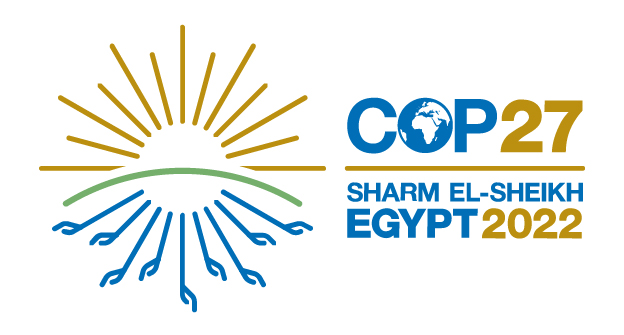Thousands of climate negotiators representing nearly two hundred countries in the world meet every year at a climate change summit called Committee of the Parties (COP) of the United Nations Framework on Climate Change (UNFCCC). The meeting also attracted tens of thousands of activists, observers, businessmen and media, making it the largest in the world compared to any other gathering under the auspices of the United Nations. The COP meeting is a means by which the global community coordinates actions to reduce greenhouse gases emission that fuel global warming and cause climate change on the planet.
Controlling Ambition Amid Depression
COP-27 is scheduled to be held from 7 to 18 November 2022 in the city of Sharm el-Sheikh, and Egypt will host the summit. The tough challenge this time is to ensure that there are no setbacks in commitments compared to the previous year in Glasgow as many countries in the world are currently grappling with food shortages, energy crises and high inflation due to the Russia vs Ukraine war.
Egyptian Foreign Minister Sameh Shoukry who was appointed the president of COP27 reminded us that this COP will be held in a difficult geo-political situation, with the world being concerned about energy and food challenges. Thus, this condition will have an impact on the level of ambition and can cause disruption to climate change priorities. As the first African country to host a COP meeting in the last six years, he also wants to focus on how developing countries can obtain funds to adapt to climate change and to finance a green energy transition. Sameh Shoukry went on to say that the main focus of COP-27 was to step up emission reduction ambitions and affirmed no backsliding on commitments and promises made at the previous summit.
Last year’s COP-26 in Glasgow was the first event to take place after the coronavirus pandemic, and was attended by 40,000 participants and 120 world leaders. It is hoped that this year’s participants will not be less than last year. The main goal of the COP is to limit the current increase in global average temperature to an increase of about 2.7°C or more by the end of the century compared to the pre-industrial average earth temperature. Whereas the maximum temperature increase is 20C and ideally close to 1.50C to avoid a bigger and life-threatening climate catastrophe as we know it today.
Unfavorable Geopolitical Situation
The global struggle to tackle climate change is rubbing against the race for fossil fuels as Europe tries to move away from Russia’s use of oil, gas and coal. This has caused the price of natural gas to soar and then to coal. Whereas coal is the dirtiest fossil fuel and threatens the efforts currently being promoted, namely green economic development, decarbonization and the use of renewable energy.
Falling renewable energy costs should lead to large investments into cleaner forms of energy, but the current geopolitical situation suggests the switch to renewables will take longer than the global community anticipates. The crux of the matter is how developing countries can implement this transition while ensuring their economic growth is not affected.
In Glasgow last year, poor countries suffering the greater impacts of climate change argued that they should not miss the opportunity to exploit their oil and gas reserves. Since then, they have stressed that the priority of this year’s meeting is to make rich countries pay more to help them in transition to clean renewable energy.
Europe’s rush to buy African natural gas, while lagging behind green infrastructure funding and gas pipelines and power generation makes countries like Angola, Nigeria or Senegal are hooked on dirtier fossil fuels and delay access to electricity for hundreds of millions of people.
The latest estimates for financing developing country climate goals are USD 6 trillion by 2030. Under the Paris agreement, developed countries agreed to provide about USD 100 billion per year by 2020. But to date they have failed to meet the promise. Especially in the midst of the current food and energy crisis.
Developing countries wanted to talks about finance not only limited to funding for mitigation and adaptation to a warming planet. They also want a discussion about what is known in the jargon of climate diplomacy as “loss and damage” due to climate disasters. That means developed countries, which are largely responsible for climate change, need to compensate for some of the damage suffered by poor and vulnerable countries to climate disasters.
What can be done?
An important role of the climate change negotiators who will convene in Egypt next month is to encourage and mobilize climate change mitigation and adaptation actions. Sameh Shoukry’s role as the President of COP-27 is to lead and encourage dialogue to produce more meaningful progress at this COP. Interaction between governments and non-governmental actors (NGOs, academics, practitioners) around the world is essential to ensure their participation in achieving the goal of net zero emissions by the middle of this century.
The transition from the use of fossil fuels to renewable energy must be ensured to continue. Green policies such as electric vehicles, carbon taxes, etc. need to be continuously encouraged, and the government seems to need to be an example. In this case, the government needs to provide an example of an environmentally friendly supply chain, for example by reducing mobility and official travel and increasing working hours at home. Things like this are likely to help reduce emissions and help with climate solutions. Hopefully!
**
This article only reflects the personal view of Mr Doddy Sukadri, UN CC:Learn Ambassador and Executive Director of Yayasan Mitra Hijau (Green Partner Foundation).

